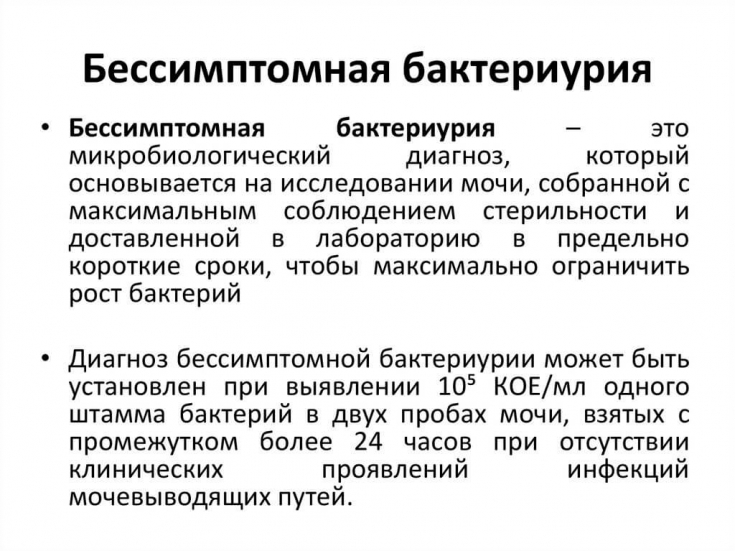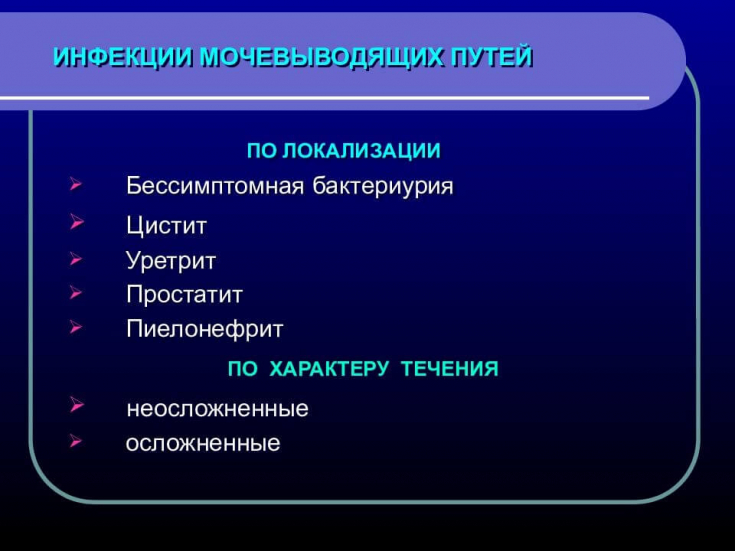Each year, the European Association of Urology (EAU) offers clinical guidelines for the diagnosis and treatment of urological infections, which we take as the basis for the treatment of asymptomatic bacteriuria, cystitis and pyelonephritis.
Biofilm research and growing antibiotic resistance have changed European thinking about asymptomatic bacteriuria, now considered a generally benign and sometimes protective condition.
For more information about the use of antibacterial agents in urology and the prevention of antibiotic resistance, read the article on estet-portal.com
- Specific features of European guidelines for the treatment of urinary tract infections
- Modern views on the treatment of asymptomatic bacteriuria
- Vaccine therapy for asymptomatic bacteriurii
Peculiarities of European guidelines for the treatment of urinary tract infections
Having undeniable advantages in diagnosis and generalization of experience, European recommendations for the treatment of urinary tract infection are characterized by:
1. Limited experience with uroantiseptics, even those produced in European countries, such as Furamag and Macmirror, which can lead to overuse of antibiotics, contributing to the formation of antibiotic resistance in EU countries;
Follow us on Instagram!
2. These recommendations contain little evidence for the treatment of people in Eastern European populations;
3. They are based on the personal traditions of doctors and the mentality of the European population. Perhaps that is why in recent years in Western Europe, in the treatment of asymptomatic bacteriuria, more and more attention is paid to herbal remedies or alternative approaches, for example, drinking more fluidstee.
Modern views on the treatment of asymptomatic bacteriuria
Evolutionarily, microorganisms and humans have developed the ability to coexist together, opportunistic microflora has developed the properties of persistence.
Updated recommendations for antibiotic prescribing in the treatment of cystitis
Updated EAU guidelines suggest do not treat asymptomatic bacteriuria in the following cases:
- non-pregnant women;
- people suffering from diabetes;
- older patients;
- patients with spinal cord injury;
- the patient has a bladder catheter.
In general, we can agree with the inadvisability of repeated use of antibiotics (uroantiseptics) while maintaining bacteriuria after previous treatment.
The following options are possible:
live watch;- Use of herbal medicines with uroantiseptic effect;
- use of vaccination with autovaccines or manufactured preparations.

can be classified as natural uroantiseptics with certain assumptions. Such therapy is quite effective and looks more attractive than dynamic observation.
Treatment of chronic cystitis: main directions and types of therapy
Vaccinationis an alternative approach that, based on the formation of an immune response, allows the body to independently determine whether it is advisable to have asymptomatic bacteriuria as a protective reaction or non-sterile immunity. At the beginning of the 20th century, A. Wright substantiated that the principles of active immunization are important not only in prevention, but also in therapy, and began to use the term "vaccination therapy
ia". Vaccine therapy for asymptomatic bacteriuria
Vaccine therapyis based on repeated systemic exposure of the body to a specific antigenic stimulus, which is accompanied by the production of specific antibodies and an increase in the overall resistance of the body. Vaccine therapy is mainly used for
chronic recurrent infections. Vaccination is an alternative approach that, based on the formation of an immune response, allows the body to independently determine the appropriateness of the presence of asymptomatic bacteriuria.

The characteristics of the formation of the immunological response limit the effective use of vaccines in children under 5-6 years of age and may have certain characteristics in the elderly.
Autovaccinesmade from your own pathogen are the gold standard, but are inferior to industrially produced preparations in terms of convenience. Among the latest in the treatment of urinary tract infections,
two vaccines are best known:Uro-Vaxom and Urivak.
Modern features and possibilities of clinical urinalysis
Vaccination target groups:
1. recurrent urinary tract infections (more than 2 times every six months or 3 times a year), despite repeated courses of antibacterial or uroantiseptic therapy;
2. failure of less than two courses of antimicrobial therapy and persistence of bacteriuria;
3. prevention of recurrent urinary tract infections in risk groups (presence of vulvitis or vulvovaginitis in girls and women; people with diabetes; with bladder catheters; women planning pregnancy; previous urinary tract infections ).
One Step From the Lavatory: Treating an Overactive Bladder
whose achievements are:initial use of uroantiseptics (Furamag, Makmiror) instead of antibiotics for the treatment of urethral syndrome and cystitis without concomitant sexually transmitted infections;
careful attention to pregnant women with bacteriuria, their treatment as a risk group;- use of no more than 3 courses of antibiotic therapy for infections of the urinary system that are not accompanied by fever;
- Increased use of vaccination to achieve sterile urine or prevent recurrence of urinary tract infection and antibiotic resistance.
- More useful and interesting information on our channel on
YouTube:






